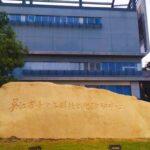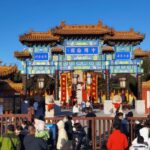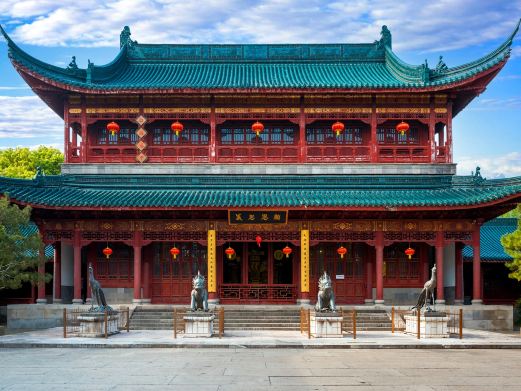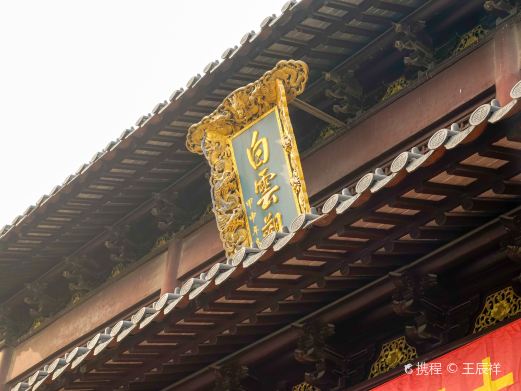The Shangu Liúquán Cultural Park is located in Fengjing Village, Tianzhu Mountain Town, Qianshan County, Anhui Province. There are currently more than 400 stone carvings from various dynasties including the Tang Dynasty (618 – 907 AD) and the period from 1912 to 1949 AD. There are many stone carvings from the Song Dynasty (960 – 1279 AD). The stone carvings are densely distributed on the cliff walls, boulders, and riverbeds of the valley.
There are hundreds of authors of the inscriptions, and no less than a hundred can be identified. Famous officials and scholars such as Li Dexiu of the Tang Dynasty, Wang Anshi, Huang Tingjian, and Su Dongpo of the Song Dynasty, Hu Zuanzong of the Ming Dynasty, and Zhang Kai of the Qing Dynasty all inscribed on the cliffs and valleys. The content of the inscriptions covers various aspects such as astronomy, geography, politics, economy, military, and culture. There are various literary forms, including poems, odes, chronicles, and inscriptions. The calligraphy styles include regular script, cursive script, official script, running script, and seal script. The three earliest stone carvings in Shangu Liúquán are all from the Tang Dynasty, and they are all distributed on the cliff on the east wall of the Ancient Shiniu Cave. Two of them are inscriptions left by Li Ao, a Tang Dynasty essayist and philosopher, when he visited the valley during his tenure as the governor of Shuzhou. There are more than 100 inscriptions from the Northern and Southern Song Dynasties in Shangu Liúquán, and the content is also extremely rich. Here, there is not only the earliest existing inscription from the second year of Duangong (989 AD) in Anhui Province with the names of Zhao Fu, Shu Ya, and Huang Mengxi; there are also poem inscriptions by politician Wang Anshi, inscription by calligrapher Huang Tingjian, and chronicle inscription by Li Shizhong. In the Southern Song Dynasty, there are poem inscriptions by Zhang Tongzhi and so on. In the Song Dynasty, tourists who came to Shangu Liúquán to enjoy the scenery were in an endless stream, forming an unprecedented trend of recording travels with stone inscriptions. After the Yuan Dynasty, many tourists flocked to the valley and also left a large number of stone inscriptions. From the perspective of calligraphy, the stone inscriptions here include various styles such as official script, regular script, cursive script, seal script, and running script. Each calligraphy style is also rich in changes and has its own characteristics, basically representing the style and features of the development and evolution of Chinese calligraphy art since the Tang Dynasty. It is a precious treasure trove of calligraphy art. Opening hours: Open all year round from 08:00 to 17:00. Preferential policies: Children: Children under 6 years old (inclusive) or those with a height of less than 1. 2 meters (inclusive) are free; minors aged 6 (excluding 6 years old) to 18 years old (inclusive) are half price. Seniors: Seniors aged 65 years old (inclusive) and above are free; seniors aged 60 (inclusive) to 65 years old (excluding 65 years old) are half price. Disabled people: With valid certificates, free. Military personnel: Active-duty military personnel, free. Retirees: Retired military personnel, free. Students: Full-time undergraduate and below students are half price. Supplementary note: The above information is for reference only. The specific information is subject to the disclosure on the day at the scenic spot.Shangu Liúquán Cultural Park
The Shangu Liúquán Cultural Park is located in Fengjing Village, Tianzhu Mountain Town, Qianshan C[...]









